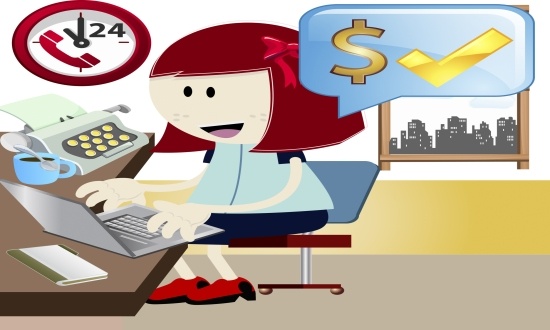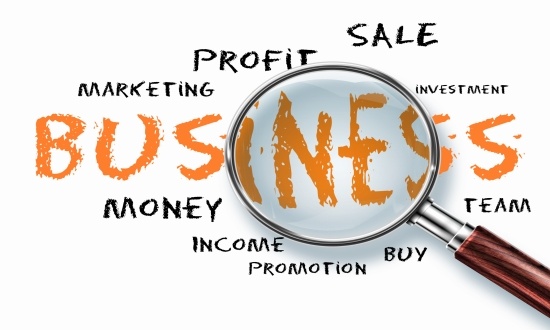
When discovering how to earn money on eBay, there are a lot of problems that can creep up on you that are completely unanticipated. The perspective of eBay is that by listing auctions and selling items through the Buy It Now feature, you’ll develop a customer base and a source of income that can help you create a strong business!
The reality is that this is just one part of the process. Developing your listings, keeping track of your fees and costs, and creating a reputation were discussed in Part 1 of this series.
In Part 2, we’ll discuss building business relationships that can help you drive down your margins. We’ll also look at ways you can keep a concise business plan humming along while your orders keep coming in.
That way you’ll not only have the products and identity that will cause a desire in your listing viewers to want to purchase from you, but you’ll be able to attract them with better prices and better margins than your competition.
You Can’t Be Everything To Everyone
Those that find great success on eBay do so because they focus on one specific niche of products. Diversification is important so you can reach the most people possible, but there are limits.
I learned this lesson the hard way during my time on eBay, but thankfully it was a lesson I only needed to learn once.
After getting a series of high value cards that sold for above average prices, I took some of those profits to diversify my business. I used an old contact that I had with a fantasy figurine wholesaler and got some tremendous values on things like dragon figurines, wizard statues, and even some vases, glassware, incense, and other similar items.
In taking a look at the competition, I could see that I could undercut their prices by at least 10%!
I could get more traffic from my existing customer base and reach out to new customers. At least that’s what I thought.
The reality was that I’d built a reputation for being a gaming retailer that could provide a great value on really hard to find cards for a variety of games. When I diversified my inventory portfolio, I actually lost income across the board because I confused my customer base.
This became evident in some of the questions I began receiving:
- Are you no longer selling any gaming products?
- Why did you take down all your card listings?
- Why did you decide to sell vases with dragons on them?
I hadn’t taken down any listings… I’d added them! Because I’d confused my customer base, however, the perception was that I was changing my business model.
When I took down this additional products that fell outside of my niche, my sales restored themselves to their previous levels. The morale of the story? If you don’t want to have a large, glass dragon vase sitting on top of your kitchen cabinets as a decoration, keep your reputation intact and stick with your confirmed niche.
How Can You Improve Sales If You Have To Stay In Your Niche?
When you want to know how to make money on eBay, the primary place you can improve sales and make more in overall profits in your niche is to improve your margins. The easiest way to do that is to raise your prices, of course, but that’s not something you can generally do on eBay.
Your most loyal customers will abandon you for a competitor the moment they sense they can get a better value elsewhere! That means it is up to you to find a way to keep lowering your prices so that you can stay competitive. In the world of eBay, $0.01 really does make a big difference!
The start of this process begins with your relationships that you have with vendors, wholesalers, and distributors. If you’ve got a middleman in the process, you’re already paying at least 15% too much in most cases! Use your leverage as your own online business to get source materials from their creators and eliminate the distributors or the wholesalers altogether.
For me, that meant speaking with the card manufacturers about receiving regular deliveries of their products. Now I had to work directly with the manufacturer’s distributing department and work with their facilities to get deliveries, but that eliminated the wholesaler for a majority of my products.
For smaller agencies, I could just order directly and save even more! For the rarest of cards that I’d get into inventory, that meant I could sell them for 5% less than anyone else, but make 40% total profit because of my lower purchasing costs!
This formula works with every type of niche. You might have a lot of work to do to track down the manufacturer. You might even need to think about an importing license in some fields! The efforts you take, however, will always be worth the initial investment of time that you take.
Always.
What Is Your Overall Business Plan?
The longer you stay on eBay selling items, the more you’re going to need a concise business plan. If you want to know how to earn on eBay, then your business plan should be developed as soon as possible. How many listings do you want to have by the end of this year? By the end of next year? Or in 5 years?
And how much do you want your average listing price to be? Your average sale? Average products shipped per customer?
With eBay, you’ve also got to be flexible with your business plan and adapt to ever-changing circumstances. In my case, for example, I could charge a ?fair handling fee? with every purchase that was made.
After 8 months, eBay changed the terms and conditions to eliminate the handling fee altogether and I could only charge the actual postage amount for shipping. I’d used the handling fee to pay for card holders, boxes, padded envelopes, and all those other shipping essentials, but now I couldn’t.
I also couldn’t just eat the cost of those items. I basically had three choices available to me if I wanted to stay in business:
- Increase the cost of my items to reflect these added shipping costs without telling anyone what I was doing.
- Increase the cost of my items and completely spell out the costs in my listings to make the pricing be competitive.
- Eliminate the extra items and ship everything based on the actual cost alone.
As I ran down the costs in my listings, my customers could see everything that they would be charged to make sure their products arrived safely. Was I suddenly more expensive than my competition? Yes. Did I lose business for the first 30 days of my transition? Yes.
I saw a 15% total drop in revenues in the first 30 days as my customers went to cheaper competitors… but they came back as soon as they realized that my competitors were cheaper because they’d eliminated the protective items from the shipping costs that I spelled out in detail!
If I didn’t have enough flexibility to adapt to this change, I would have ended up losing business because I would have done what my competitors did: eliminate the extra costs. By flexing the costs into the listing and by being honest about why the listings suddenly had a higher price, people came to understand that there was better value in the higher price.
In the realm of honesty, I also made sure to discount multiple listing purchases where the costs per item were lower.
Nothing drives a customer back to you for more purchases than an unexpected refund!
What Does Your Business Plan Need?

For an effective eBay business plan, you need to set out goals for at least 5 years. You’ll also need to determine what it will take to reach those goals and begin reaching out to vendors, manufacturers, and other suppliers to start the negotiation process.
You will need to study how much time it takes you to put a listing up, see if there are any shortcuts or apps or software that an investment in could save you on time, and understand that shipping costs really are variable.
If you take no other advice from this piece, take this: Budget a minimum of 6% for unexpected costs in your business plan. You’ll have eBay buyers dispute items through PayPal and you’ll lose 19 out of 20 times on chargebacks.
Sometimes you’ll miscalculate a shipping expense. Sometimes a shipping charge to a country will change without you realizing it. These things happen, but if you budget for them in advance, you won’t lose your shirt.
By taking all of these variables into account and being open and honest with your customers, you’ll know how to earn money on eBay consistently.
Now get to work, build some relationships, and start listing your products!
[box style=”rounded”]If you enjoyed this post, please consider sharing it[/box]